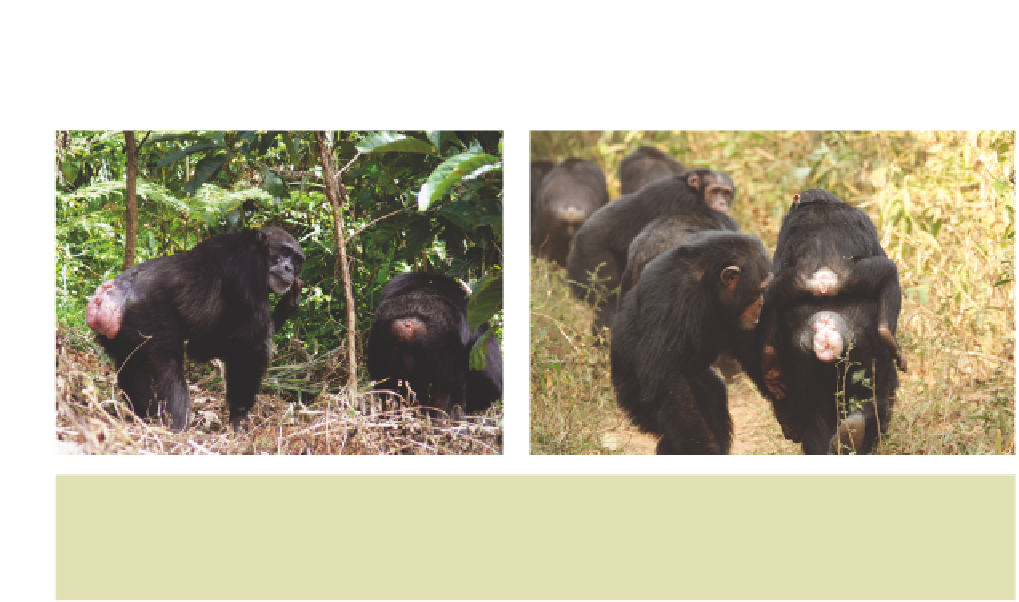Biology Reference
In-Depth Information
(a)
(b)
Fig. 2.11
Sexual swellings in female chimpanzees (Bossou, Guinea, West Africa). (a) Female on the left with
male retreating on the right. Photo © Kathelijne Koops. (b) A 42-year old female carrying her five-year old
daughter on her back, being inspected by an adult male. She became pregnant soon after this photo was taken.
Photo © Susana Carvalho.
Sexual swellings in female primates
In some species of old world monkeys and apes, females advertise their sexual receptivity
with visually conspicuous sexual swellings (Fig. 2.11). 'In my
Descent of Man
',
wrote Charles Darwin (1876), 'no case interested or perplexed me so much as the
brightly-coloured hinder ends and adjoining parts of certain monkeys'. Species with
swellings, for example baboons and macaques, tend to live in groups with several
sexually active males ('multimale' groups; Clutton-Brock & Harvey, 1976). Similarly,
among the apes, pronounced swellings occur in female chimpanzees, which live in large
multimale groups, but not in gibbons, orang-utans or gorillas, which live in smaller,
single-male groups involving either monogamy or a male with a harem. In total, across
70 species, none of 29 species living in single-male groups has sexual swellings
compared to 29 out of 41 species (71%) living in multimale groups (Nunn, 1999).
A phylogenetic analysis supports the association between swellings and multimale
groups (Fig. 2.12). Swellings have evolved three times independently in the old world
monkeys and apes, and in all three cases this transition is associated with the evolution
of multimale groups from a single-male ancestral state. A further phylogenetic analysis,
using statistical methods to reconstruct probable ancestral states, suggests that
multimale mating systems most likely evolved before sexual swellings (Fig. 2.13).
Therefore, it was a new selection pressure in multimale groups that led to the evolution
of swellings, rather than swellings favouring the evolution of multimale groups.
There are also two losses of swellings in Fig. 2.12. In one of these (number 2) this was
associated with a change from multimale back to single-male grouping, as predicted. In
the other case, however, loss of swellings occurred within a multimale system (loss
number 1 in Fig. 2.12). A likely reason for this is discussed later on.
Why are swellings associated with multimale grouping? When there are several
males in her group, a female is faced with a delicate balancing act. On the one hand, she
Darwin was
puzzled
Female sexual
swellings occur in
multimale groups
The graded signal
hypothesis





























